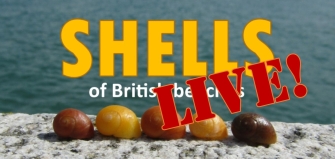

Gallery of UK Shells
Want to know what the creature who lived in your shell looked like? Have a look at ShellsLive! for photos and clips.
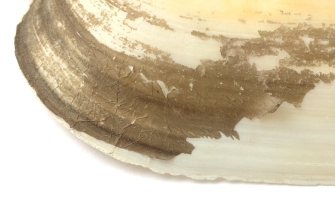
Brown skin on shells aka the periostracum
This brown skin layer we sometimes find on shells is a natural part of the shell itself. It is grown by the creature to protect the shell itself. In some cases it wears off but, when it exists, it can make identifying the shell underneath pretty difficult.
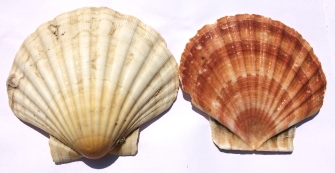
King Scallop
Pecten Maximus
Bivalve
Distinguishable by its large size, non-matching halves (one convex, one flat, differing colours) and symmetry.
See this shell in Shells Live!
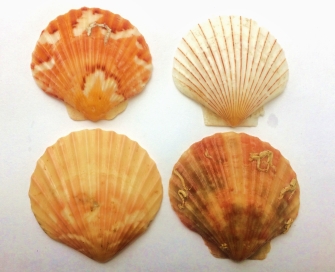
Queen Scallop
Aequipecten opercularis
Bivalve
Smaller than the King Scallop (generally smaller than 9cm across) and the two halves are more similar to each other than the Kings although still non-matching. Generally perfect symmetry in its shape ie.matching ears.
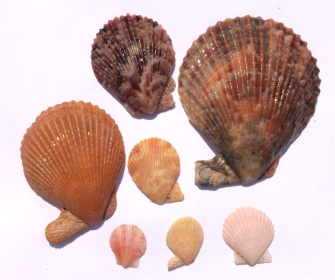
Variegated Scallops
Chlamys varia
Rarely longer than 6cm, this tends to be smaller than either the Queen or King Scallop and is not as round in shape. It has non-matching ears.

Humpback Scallop
Chlamys distorta
Generally smaller than the variegated scallop, it looks like a melted, distorted verson of it.

Tiger Scallop
Palliolum tigerinum
A small scallop which is very much smoother than any of those above.

Common European Turritella aka screw shell aka auger shell
Turritella communis
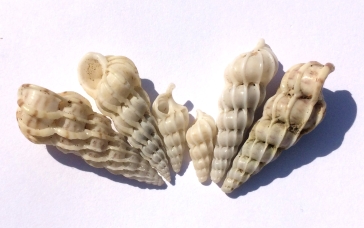
Common European Wentletraps
Epitonium clathrus
If shells had skeletons, this is surely what they would look like.
They take their name from the word 'wentel' which is Dutch for spiral staircase.
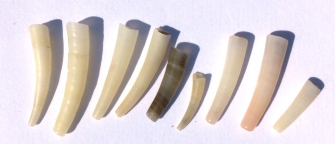
Tusk shells
Common tusk shells
Dentalium vulgare
Grooved, can be found living in shallow water.
Smooth tusk shells
Dentalium entalis
Deep water (North Sea) only
If mice had tusks, they would be about this size.
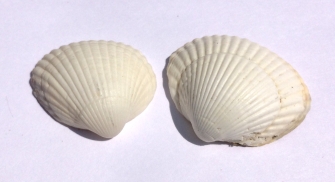
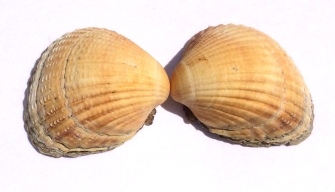
Common cockle
Cerastoderma edule
Cockles are made of two identical valves / shells.
See this shell in Shells Live!
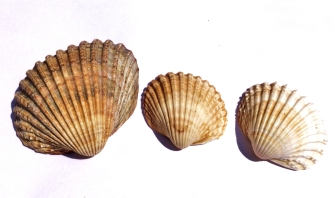
Rough cockle
Acanthocardia tuberculata
True cockles have visible grooves ratiating from their 'noses'. In rough cockles, these are particularly deep.
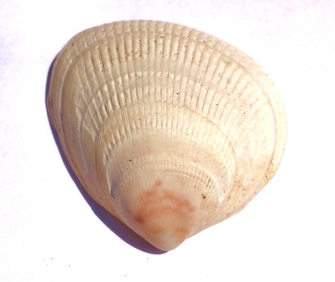

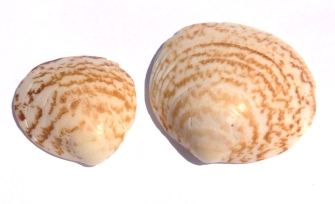
Dog cockle aka European bittersweet
Glycymeris glycymeris
Dog cockles are not related to true cockles. The shells are very thick and sturdy, more so than common cockles. And, before you ask, they are not related to dogs either.
See this shell in Shells Live!
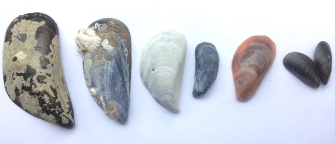
Blue Mussels aka common mussel
Mytilus edulis
Blue mussels can be found in a wide variety of blues, some with visible stripes.
See this shell in Shells Live!
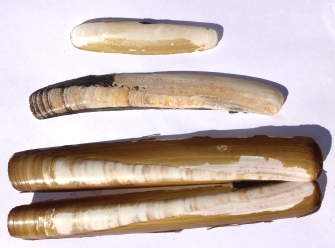
Razor clams
Top: Bean Solen
Pharus Legumen
MIddle: Great Razor Shell
Ensis arcuatus
Bottom: Giant Razor Shell
Ensis siliqua
See this shell in Shells Live!
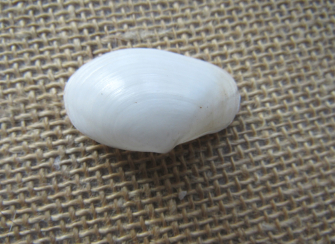
European spoon clam
Cochlodesma praetenue
A very thin.delicate shell with a hinge shape dlike a spoon

European Painted Top Shell
Calliostoma zizyphinium
With a noticeable cone shape, painted tops are frequently, pink, purple or beige.
See this shell in Shells Live!
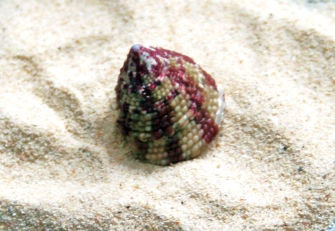
Grooved Jujubinus
Jujubinus exasperatus
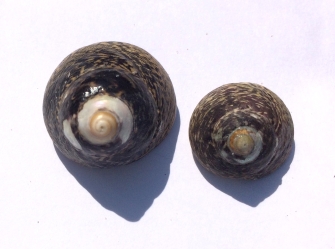
Toothed Top Shell
Calliostoma zizyphinium
Thick shells which frequently have mother-of-pearl showing through under the black pattern. The inside of the top shell is shiny mother of pearl. It is said that in Victorian times, the larger shells would be collected and tiny shiny buttons made from them.

Flat top shell
gibbula umbilcalis
A delicate pink or purple pattern which often is worn away showing the mother of pearl beneath.
See this shell in Shells Live!
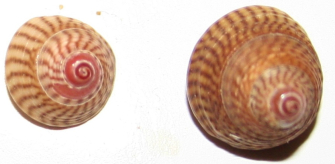
Grey Top aka grey top shell aka grey top snail
Gibbula cineraria
Generally brown rather than grey.

Turban Top Shell
Gibbula magus
A large top shell, around 3cm across.
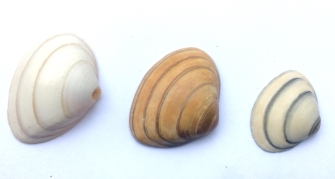
Baltic tellins
Limecola balthica
Extremely variable - pink, white, striped, plain. Anything is possible.
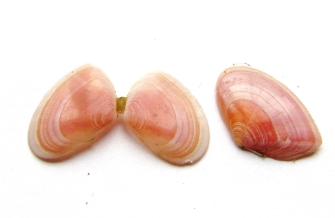
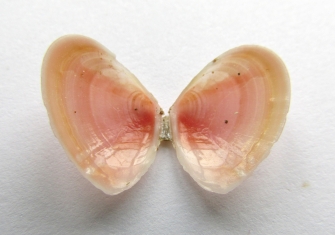
Thin tellin
Tellina tenuis
A small, delicate pink shell with darker pink stripes (bands). Each halfi s not quite symmetrical with the 'nose' slightly off-centre.
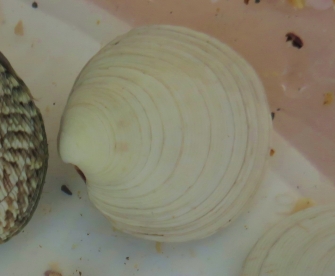

Common Pelican's Foot
Aporrhais pespelecani
I have never got close enough to a pelican to see its feet, but I am more than prepared to believe this is what they look like. To see a pelican's visit to England have a look here.
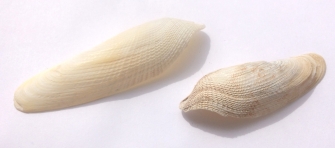
European Piddock
Pholas dactylus
These are unsual clams in that the shell itself is curved up at one end. They use the flat edge of their shells to help them bore themselves a hole in rock. See Boring Stuff for more on these.
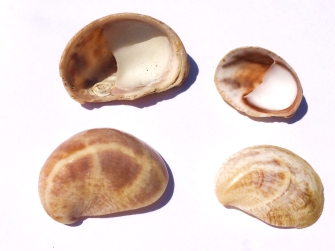
Atlantic Slipper Limpets aka Atlantic Slippers
Crepidula fornicata
Put true limpets out of your mind as these look nothing like limpets proper. They also look very little like slippers ... Have a look at our page on these fascinating creatures.
See this shell in Shells Live!
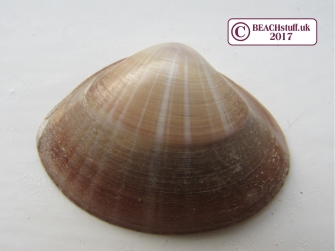
Rayed Mactra
Mactra Stultorum
A type of trough shell which has aparticualrly smooth and shiny shell.
See this shell in Shells Live!

Grooved carpet shell aka Palourde clam
Ruditapes decussatus
A sturdy robust-feeling grooved shell.
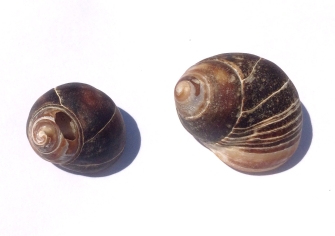
Common winkles aka common periwinkles
Littorina littorea
A thick shell in browns and blacks.
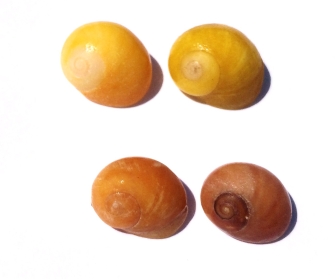
Flat periwinkles
Littorina obtusata
A smooth shell with a visible swirl but a flat 'snout'. Often in bright sunny yellow shades or orangey brown.
See this shell in Shells Live!

Rough periwinkle
Littorina saxatilis
This has noticeable grooves running concentrically around the shell and a very pointed 'snout'.

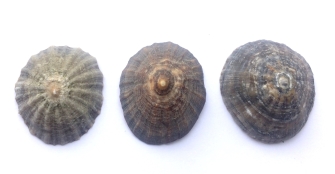

Limpets
Patella sp.
See this shell in Shells Live!
Limpets are formed of just one conical shell. There are three species of limpet we commonly see in the British Isles but it is not often easy to tell them apart without seeing the limpet snail itself.
This is partly because the shells of the three species are very similar but also because they are often covered in barnacles or seaweeds and also, patterns, colours and ridges get worn away as the animals age.
Common Limpet
Patella vulgata:
most commonly seen living high up n the shore where it is frequently exposed at low tide. If you get to see the body, it is yellowish, often pale.
Black-footed Limpet
Patella depressa:
found living lower down the shore and has a black body.
China Limpet
Patella ulyssiponensis:
found living where it is not exposed by low tide often. Has an orangey body.
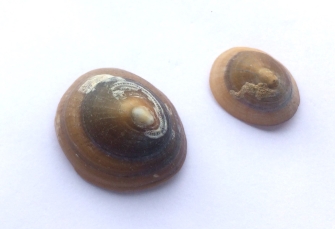
Blue rayed-limpet
Patella pellucida
While the juveniles, with clear blue stripes can be seen on kelp fronds, the larger ones can be seen living burrowed into the kelp stem near the holdfast. Have a look at our page on them.
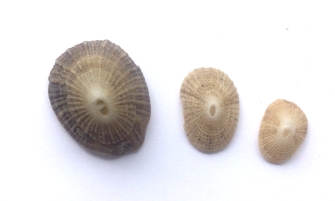
Keyhole Limpet
Diodora sp. / Diodora graeca
Distinguished by the very small hole at the top.
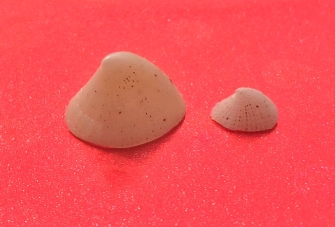
Sugar Kelp Emarginula
Emarginula octaviana
A small relative of the key hole limpet
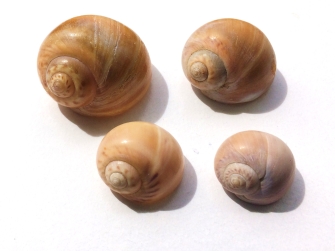
Necklace Shell aka Moon snail
Euspira catena
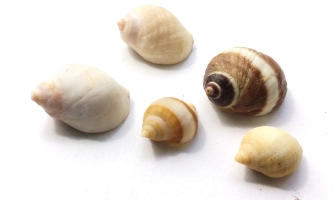
Dog whelks
Nucella lapillus
Found in a variety of colours, stripes. Characteristised byit very thick shell which protects it from the harshness of rockpool life.
See this shell in Shells Live!
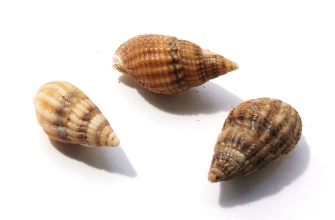
Netted Dog whelks
Tritia reticulata
Usually browns, beiges and white, with a 'lumpy' reticulated shell.
See this shell in Shells Live!
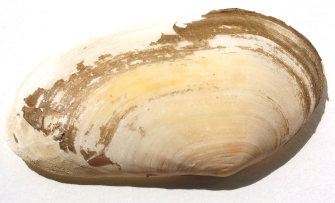
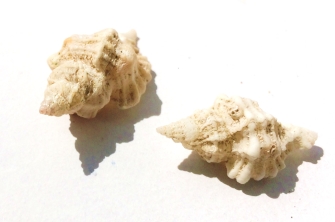
Sting Winkle
A carnivorous sea snail
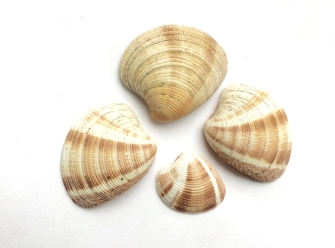
Striated Venus
Chamelea striatula
The two idenetical halves have visible (and feelable) concentric rings as well as stripes radiating from the shell's 'nose'.
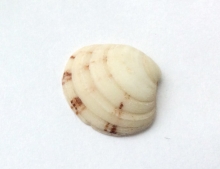

Wide-ribbed Venus
Clausinella fasciata
In comparison with the striated Venus above, the concentric bands are wider and more pronounced.
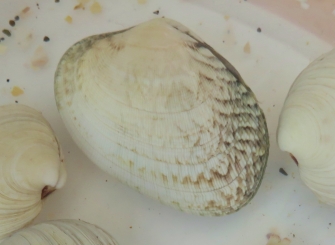
Pullet Carpet Shell
Venerupis Corrugata
Another member of the large venus family.
See this shell in Shells Live!
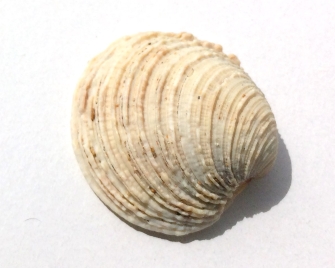
Warty Venus
Venus verrucosa
One of the very large family of venus clams. It has a very rough texture and, as a bi-valve, is made up of two identical halves.


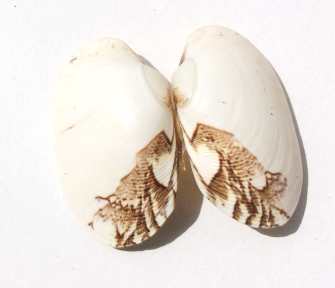
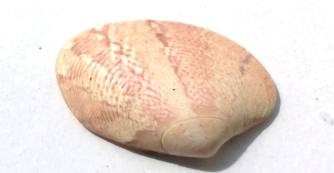
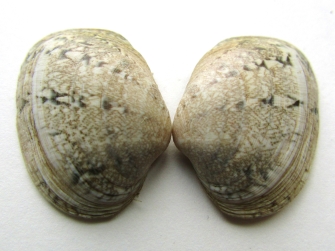
Manila clams
Venerupis philippinarum / Tapes philippinarum
Manila Clams, a member of the Venus family, are vaery variable in their patterns as can be seen in the four examples above.

Rayed Artemis
Dosinia exoleta
Bivalve
A thick-set almost circular shell. A member of the venus clams.
See this shell in Shells Live!
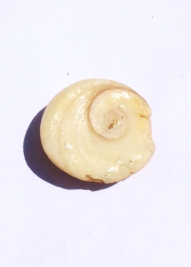

Cat's eye shell
Turbo sp.
This is actually the operculum, or trapdoor, used to cover the opening of the turbo sea snail's shell. While the whorl / spiral effect makes it look like a shell, it is solid - flat on one side and stone-like on the other.

Common Atlantic Corbula
Corbula gibba
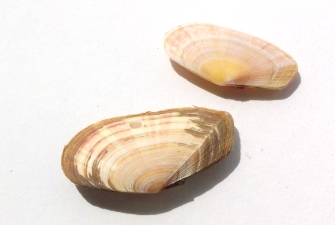
Faroe Sunset Shell
Gari fervensis
It is identifiable by the sharp 'bend' in its shell on one side of each half with the radiating colours giving it its sunset name..
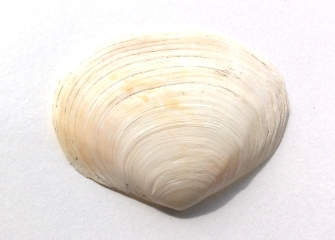
Chalky Macoma
Macoma Calcera
One of the large tellin family of clams. Made of two idential halves which are generally chalky white in colour..
One of the oyster family
To pinpoint the ID...
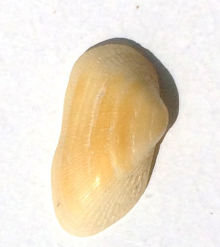
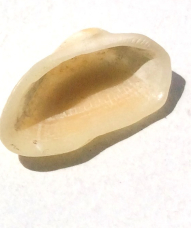
Milk-White Ark
Striarca lactea
The underside of the shell is unusually rectangular. Despite its name, it is not always milky-white.
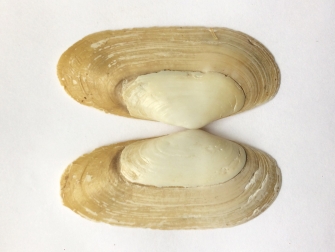

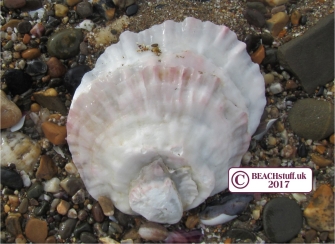
Flat Oyster aka European Oyster aka Mud Oyster
Ostrea edulis
Non-matching halves (valves) with one completely flat.
See this shell in Shells Live!
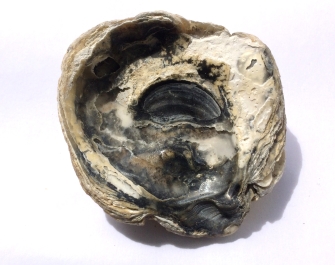
European Oyster
The 'flat' half / valve of a Eusropean Oyster (above)
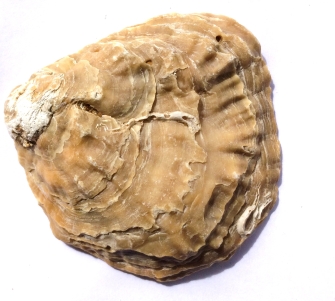
European Oyster
A colour variant of the European oyster
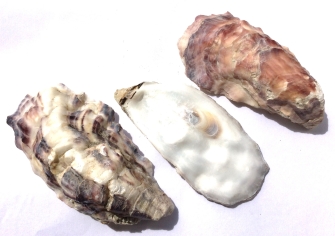
Pacific Oyster
Crassostera gigas
Generally purple or pink.In the photo above, the central valve is the bottom half of the oyster - flat and white.
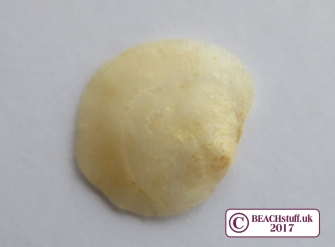
Saddle oyster
Anomia ephippium
Very thin delicate,largely circular shell.While one of the two non-matching halves is convex, the other is flat.
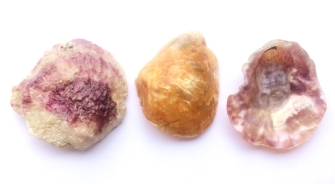
Jingle shells
Anomia sp, / anomia simplex
Delicate, largely circular but crinkled shells akin to saddle oysters.The bottom halves are rarely seen washed up on the beach as they remain stuck to the rocks.
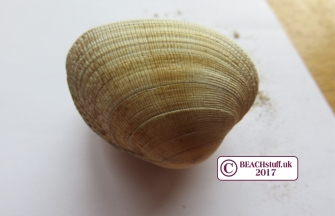
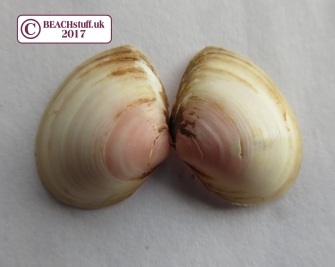
Flat Tellin
Tellina planata
Bivalve
Note the slight ridge on top (in the photo above) edges of the two matching halves.
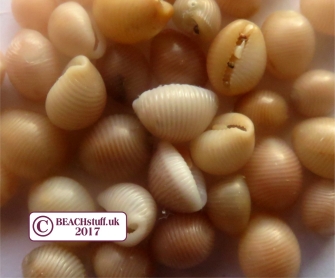
Arctic Trivis aka Arctic Cowrie aka
Trivia arctica
Can be pink,white,beige or even black. Despite its exotic name, it is the most common cowry foundin the UK. Usually about the size of a coffee bean.
See this shell in Shells Live!
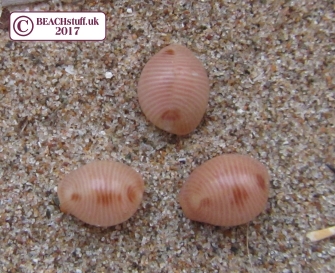
European Trivis aka European Cowrie
Trivia monacha
Distinguishable from the Arctic Cowrie by the three dark marks.
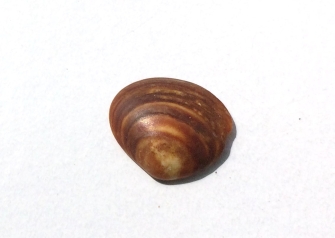
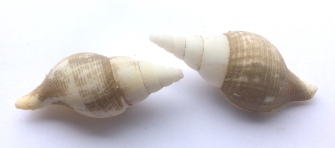
Slender Colus aka Spindle Shell
Colus gracilis
A long slim shell, much more slender than the European whelk (below) to which it is closely related.


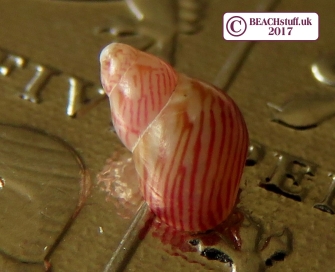
Pheasant Shell
Phasianella sp
This is a tiny little shell (in the photo above, it is dwarfed by the five pence piece it is sitting on). It has variable pink/red patterning.

Arca Shell
Arca tetragona
An unusually deep bi-valve.

Banded Wedge Shell
Donax vittatus
Made of two identical, very thin,delicate halves. Can be purple or perhaps orange.
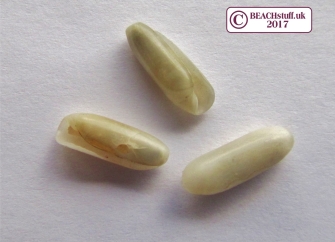
Cylindrical Canoe Bubble
Cylichna cylindracae
These look like small tubes with side openings or perhaps a piece of carefully rolled shell.
Shells which may be found on the beach
but which are not from sea snails
Some shells can be found on the beach which may have come from the dunes or green land around the beach.
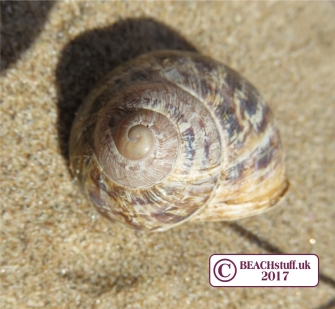
Garden snail
Helix aspersa
A common snail in our gardens, its very thin shell can be found often on beaches as can live creatures.
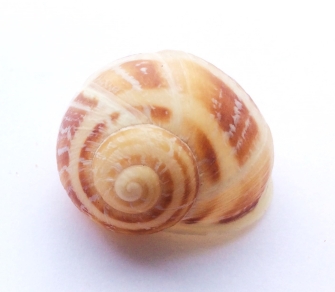
Sandhill Snail
Theba pisana
A relatively large snail, abouth e size of a garden snail. A thin,delicate shell.
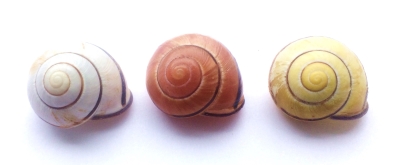
Brown-lipped snail
Cepaea nemoralis
An incredibily variable snail. Both colours and the presence of stripes can vary, along with the number and width of stripes. However, the dark line at the edge of the opening remains a constant. These are very delicate shells and tend to more likely to be crushed underfoot on the beach, more so than many sea snail shells.

Round-mouthed snail
Pomatius elegans
Unlike the other land snails listed here, the round-mouthed snails has a much thicker more robust shell not unlike that of a rockpool snail. It lives in dunes in small geograohical pockets in south and south west England.
See this shell in Shells Live!

The Pointed Snail
Cochlicalla acuta
A very small,delicate shell.
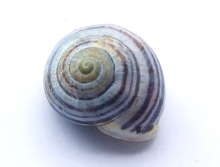
Heath Snail
Helicella itala
A very small shell.
Want to know what the snail looked like made and lived in a shell?
Have a look at Shells Live! for photos and videos
